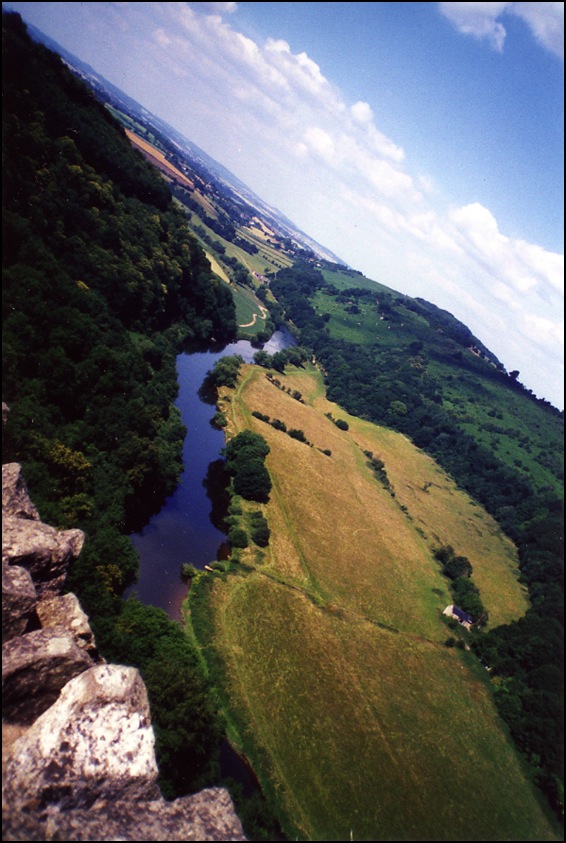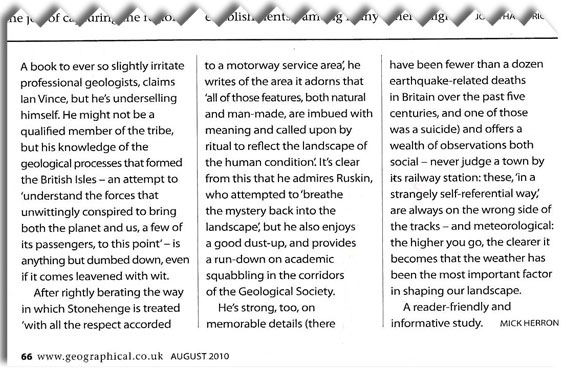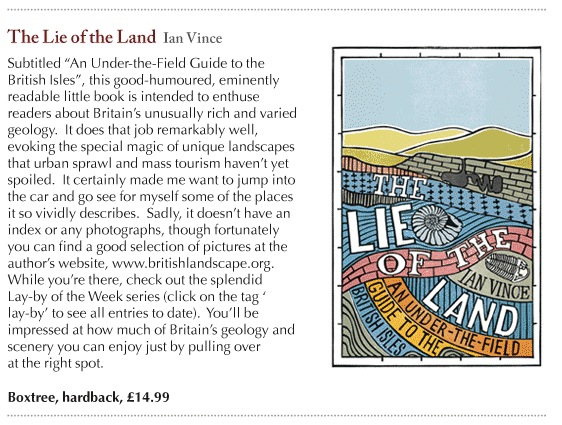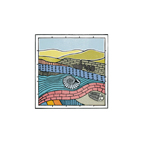Aug 2010
Night time views - Salisbury
Tuesday, 24 August, 2010. Filed under: Photography | Views & Scenery
Sometimes it’s hard to get the full beauty of a viewpoint amongst all the clutter of the day, especially on our crowded collection of islands. In history, when buildings were few and far between and we hadn’t yet divided the country up into interstitial parcels of land between roads - as is the psychological outcome of the motoring atlas - the views over the landscape we had must have felt very different. As mentioned in The Lie of the Land, our ancestors had a very different relationship with views from high ground - upland (even a range of hills as modest as the Cotswolds) had a terror all of its own and a view over a wide vale like the Severn would have come as a welcome relief.
What buildings there were nestling in the valleys would have had greater significance - especially after a long journey or pilgrimage across the country. I hope that this view of Salisbury Cathedral - which for hundreds of years would have been the tallest building in the western world - captures something of the awe a long-distance medieval traveller would have felt 700 years or so ago. By removing the detail of the town that has grown up around it, with its ring road, modern development and other 20th and 21st Century clutter and even with the housing development in the foreground, this magnificent old cathedral still takes your breath away.

What buildings there were nestling in the valleys would have had greater significance - especially after a long journey or pilgrimage across the country. I hope that this view of Salisbury Cathedral - which for hundreds of years would have been the tallest building in the western world - captures something of the awe a long-distance medieval traveller would have felt 700 years or so ago. By removing the detail of the town that has grown up around it, with its ring road, modern development and other 20th and 21st Century clutter and even with the housing development in the foreground, this magnificent old cathedral still takes your breath away.

Comments
Lay-by of the week:
Porlock Bay and Selworthy
Monday, 23 August, 2010. Filed under: Landscapes | Views & Scenery
A spectacular view over Porlock Bay is the first of two fantastic vistas from the Exmoor coast of Somerset. This car park is just west of Selworthy Beacon at the end of a very long no-through road from Minehead. Not on the way to anywhere at all, but well worth a special trip.
View Larger Map
If you’re driving on the A39, the road that connects the main towns of North Somerset and Devon, chances are you’re not getting anywhere very fast, so why not relax and make a detour to the village of Selworthy. This is the church car park in the village - rotate the panorama a little for a view of Selworthy’s beautiful white church.
View Larger Map
View Larger Map
If you’re driving on the A39, the road that connects the main towns of North Somerset and Devon, chances are you’re not getting anywhere very fast, so why not relax and make a detour to the village of Selworthy. This is the church car park in the village - rotate the panorama a little for a view of Selworthy’s beautiful white church.
View Larger Map
Lay-by of the week:
Loch Ness and the Great Glen
Friday, 20 August, 2010. Filed under: Landscapes
This is a view down Loch Ness and the Great Glen from the A82 a few miles to the south west of Inverness. The Great Glen is Britain’s most remarkable fault line, running die-straight from the north east to the south west across Scotland. But there’s far more to it than that.
View Larger Map
The fault is a tear fault - the landscape to the north moved around 80 miles south-west then, in a second phase millions of years later, 18 miles back in the opposite direction. Loch Ness - which is, on average, around 600 feet deep owes its formation to the fault: glaciers carved out the trench from the band of shattered and pulverised rock left by it.
There is also strong evidence which links it to the Cabot Fault, which runs the length of the north west coast of Newfoundland and into the Gulf of St Lawrence. When the faults were formed, over 400 million years ago and long before the Atlantic Ocean formed, Scotland was part of the same landmass as Canada.
View Larger Map
View Larger Map
The fault is a tear fault - the landscape to the north moved around 80 miles south-west then, in a second phase millions of years later, 18 miles back in the opposite direction. Loch Ness - which is, on average, around 600 feet deep owes its formation to the fault: glaciers carved out the trench from the band of shattered and pulverised rock left by it.
There is also strong evidence which links it to the Cabot Fault, which runs the length of the north west coast of Newfoundland and into the Gulf of St Lawrence. When the faults were formed, over 400 million years ago and long before the Atlantic Ocean formed, Scotland was part of the same landmass as Canada.
View Larger Map
Browse The Lie of the Land
Tuesday, 17 August, 2010. Filed under: Lie of the Land
We’re delighted to be able to tell you that the unofficial manual of the British Landscape Club, The Lie of the Land by Ian Vince is now in a browsable condition online, with the permission of the publishers, Pan Macmillan. So dive in as if you were in a bookstore - there’s a selection of links at the bottom to buy it from if you fancy picking up a tangible copy or just want to read the whole darn thing.
Buy from
Buy from
Lay-by of the week: Symonds Yat
Tuesday, 17 August, 2010. Filed under: Landscapes
Having gone to the foot of a gorge last week, we’re on the top of something similar - and we’re still on the Carboniferous limestone, only on the other side of the Bristol Channel. We’re at Symonds Yat Rock.

Again, it’s not, strictly speaking, a lay-by - more of a car park that leads to a view - but it’s only a very short walk and thousands come every year to see the view up and down the River Wye. It’s home also to Peregrine Falcons, Buzzards and Goshawks and is well worth the detour. It also makes an excellent place to watch the stars at night, according to some.
No Google Street View this time, but an OpenStreetMap image.
View Larger Map

Again, it’s not, strictly speaking, a lay-by - more of a car park that leads to a view - but it’s only a very short walk and thousands come every year to see the view up and down the River Wye. It’s home also to Peregrine Falcons, Buzzards and Goshawks and is well worth the detour. It also makes an excellent place to watch the stars at night, according to some.
No Google Street View this time, but an OpenStreetMap image.
View Larger Map
Geographical Review
Monday, 16 August, 2010. Filed under: Lie of the Land
There’s a lovely review of the BLC manual The Lie of the Land in the August issue of Geographical Magazine, the official magazine of the Royal Geographical Society. I’ve clipped out the body of it below.


Lay-by of the week: Cheddar Gorge
Friday, 13 August, 2010. Filed under: Landscapes
Not just a lay-by, but a series of parking spots running down Cliff Road in Cheddar Gorge from which to admire arguably the most beautiful gorge in Britain. And the further down the gorge you go, the more sublime the view.
View Larger Map
The gorge was carved out in periglacial conditions during the recent glaciations of the current Ice Age. Though too far south to have had glaciers, water in the limestone from which the gorge walls are made, froze and rendered the normally permeable rock impermeable. Meltwater floods in the summer months flowed over the limestone and cut a deep channel which is the gorge we see today.
View Larger Map
The gorge was carved out in periglacial conditions during the recent glaciations of the current Ice Age. Though too far south to have had glaciers, water in the limestone from which the gorge walls are made, froze and rendered the normally permeable rock impermeable. Meltwater floods in the summer months flowed over the limestone and cut a deep channel which is the gorge we see today.
The Lie of the Land reviews
Friday, 13 August, 2010. Filed under: Lie of the Land
The Lie of the Land has garnered some nice reviews since publication - here are a few of them.

Dales Life
“Anyone who has ever picked up a pebble at the seaside or a rock on a moorland path will find invaluable Ian Vince's geological guide... you will understand the area round your British holiday cottage far more deeply than before.” Giles Foden (Author of The Last King of Scotland), Condé Nast Traveller
“Takes the reader on an explosive journey across millennia. Continents glide thousands of miles like contestants in Strictly Come Dancing, Scotland swelters on the Equator and Snowdonia boasts a volcanic ring of fire with mountains taller than Everest.” Daily Express
“Brings an easy touch to a subject most would leave to a hirsute geographer” The Field
“The English Channel is a relatively recent addition to the landscape, caused by two enormous floods which took place 450,000 and 200,000 years ago respectively, as huge, glacier-fed lakes burst their banks. Had it not been for these two inundations, Vince muses, the history of Britain - and even the world - could have turned out very differently” The Scotsman
“Far from a dry, scholarly tome, The Lie of the Land is brim full of facts dressed up in a lively narrative more akin to a fictional adventure. Ian is a passionate soul and natural wordsmith.” Western Morning News
There’s a lovely review of the BLC manual The Lie of the Land in the August issue of Geographical Magazine, the official magazine of the Royal Geographical Society. I’ve clipped out the body of it below.


Dales Life
“Anyone who has ever picked up a pebble at the seaside or a rock on a moorland path will find invaluable Ian Vince's geological guide... you will understand the area round your British holiday cottage far more deeply than before.” Giles Foden (Author of The Last King of Scotland), Condé Nast Traveller
“Takes the reader on an explosive journey across millennia. Continents glide thousands of miles like contestants in Strictly Come Dancing, Scotland swelters on the Equator and Snowdonia boasts a volcanic ring of fire with mountains taller than Everest.” Daily Express
“Brings an easy touch to a subject most would leave to a hirsute geographer” The Field
“The English Channel is a relatively recent addition to the landscape, caused by two enormous floods which took place 450,000 and 200,000 years ago respectively, as huge, glacier-fed lakes burst their banks. Had it not been for these two inundations, Vince muses, the history of Britain - and even the world - could have turned out very differently” The Scotsman
“Far from a dry, scholarly tome, The Lie of the Land is brim full of facts dressed up in a lively narrative more akin to a fictional adventure. Ian is a passionate soul and natural wordsmith.” Western Morning News
There’s a lovely review of the BLC manual The Lie of the Land in the August issue of Geographical Magazine, the official magazine of the Royal Geographical Society. I’ve clipped out the body of it below.


